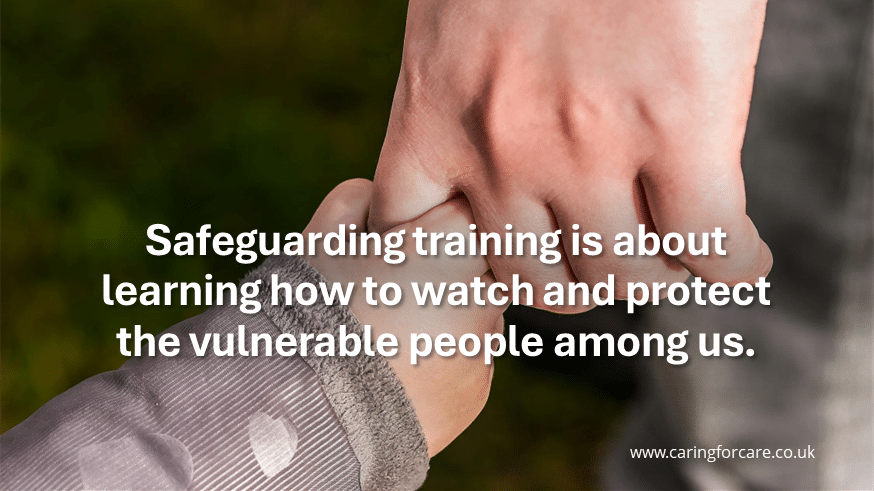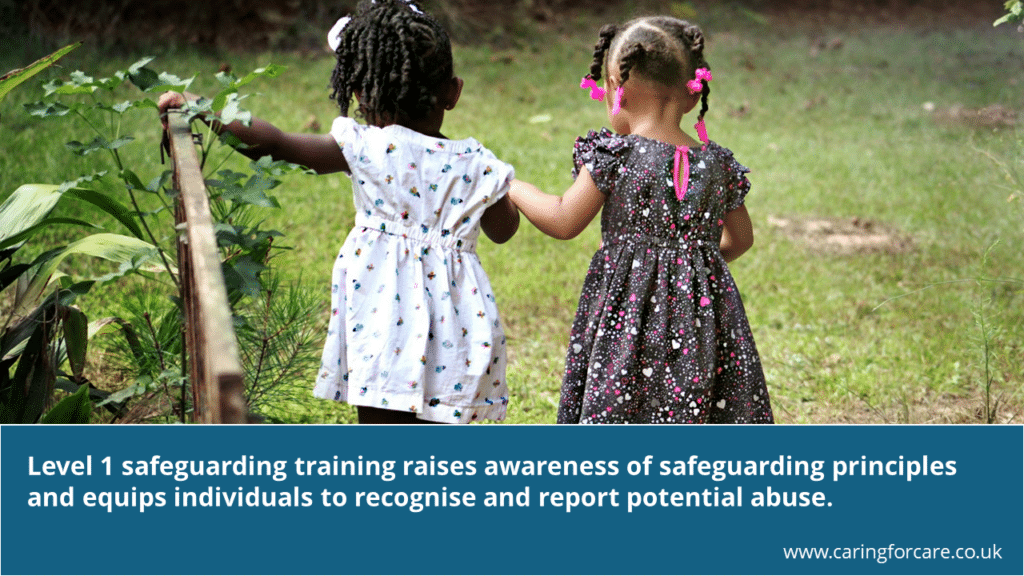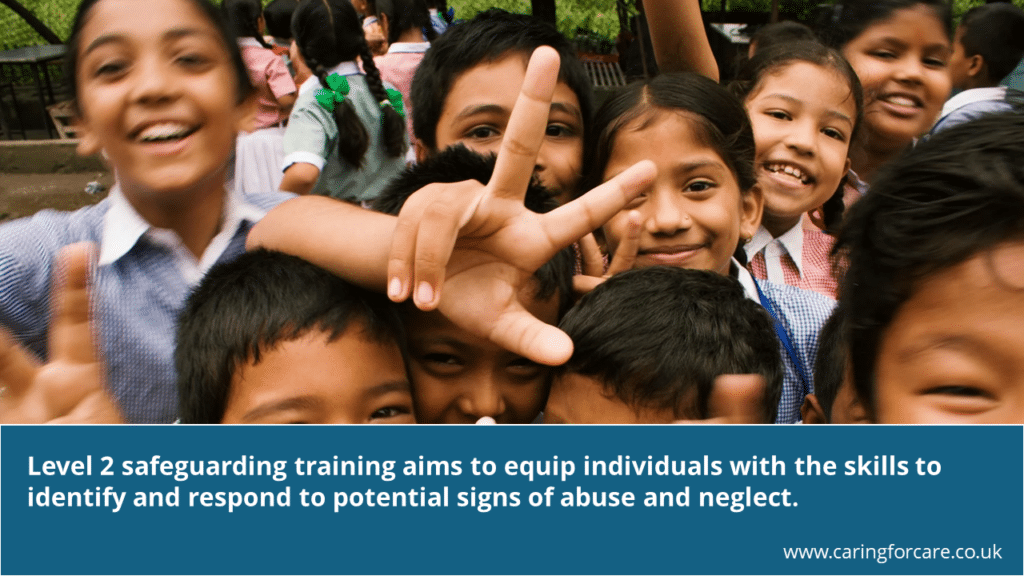Safeguarding Training Levels: How to choose the right training
As professionals who work with children, young people, or vulnerable adults, it’s our job to keep them safe from harm. Protecting these vulnerable individuals is a very important duty that falls on both organisations and professionals in many different fields.
To make sure we’re doing this job properly, we need to have really good training. In the United Kingdom, there are four levels of training for safeguarding, and each one is made for different jobs and responsibilities.
Safeguarding training helps us learn how to spot signs that someone might be in trouble and what to do about it. But not all training is the same. There are different levels that are made to fit the needs of different jobs and responsibilities.
In this guide, we’ll talk about:
- each level of training,
- what it teaches,
- who needs to do it, and
- other important safeguarding training aspects.
Table of contents
- Understanding the Safeguarding Levels
- What is safeguarding training level?
- What are the goals of safeguarding training levels?
- What is Safeguarding training level 1?
- What is safeguarding training level 2?
- What is safeguarding training level 3?
- Named Practitioner Level 4 Safeguarding
- Renewing Your Safeguarding Knowledge
- Conclusion
Understanding the Safeguarding Levels
Many organisations use a tiered system for safeguarding training, which usually has three main levels:
- Level 1: Basic Awareness
- Level 2: Advanced Safeguarding
- Level 3: Designated Safeguarding Lead
However, there is also a fourth level of safeguarding training, specifically for named practitioners.
This level 4 training is for experienced professionals who have big responsibilities in keeping people safe in their group.
They might have to make plans to ensure everyone stays safe, communicate with other groups a lot, and deal with difficult situations where someone might be in danger.

What is safeguarding training level?
Safeguarding training levels mean the different steps or stages of learning about keeping people safe. These training help people gain the right knowledge and skills to protect others who might be experience harm or abuse.
There are main three levels: basic, advance and designated safeguarding level but it is common to also have level 4 and 5. Level 4 is usually known as safeguarding for named practitioners.
These safeguarding training levels make sure that people get the right amount of learning and practice depending on what they do and how involved they are with people who need extra protection.
The training levels get more and more detailed and complex, with each one teaching more than the last and using what was learned before.
What are the goals of safeguarding training levels?
The reason for having different safeguarding training levels is to make sure each person gets the right kind of learning based on what they do and how much they’re involved with looking after kids or people who need extra care.
Here is what each level aims to do:
Level 1: Make sure everyone knows the basics of spotting signs that someone might be in trouble and how to tell someone about it.
Level 2: Give more detailed knowledge and skills to people who work directly with those who need extra help. They learn about different types of problems, how to handle someone telling them about harm or abuse happening, and the right steps to take.
Level 3: Teach special leaders how to put safeguarding rules into action, deal with tricky situations, guide other staff, work with different groups, and keep up-to-date with the law.
Level 4: Train experts who can teach others, supervise, check how things are going, and make sure everything is being done right in their organisation or with other groups.
This way, each person learns what they need to know for their job and how important it is to keep kids and vulnerable adults safe from harm.
Delivery Method
Safeguarding training can be taught in different ways, such as:
- In-person classes (face-to-face)
- Online courses you can do on your own (self-paced) or with a teacher (virtual classrooms)
- A mix of both (blended learning)
The way training is given often depends on the level of training, what the organisation needs, and what the learners need.
For instance, Level 1 training might be a quick online course, while Level 3 training might have both classroom sessions and online parts to talk about topics in more detail and look at real-life examples.

What is Safeguarding training level 1?
Level 1 Safeguarding training is the starting point for learning about keeping people safe.
This basic level training is for anyone who might have contact with kids, young people, or vulnerable adults through their job, even if that’s not their main role.
The focus is on making sure everyone knows the basics and has a good foundation of knowledge about safeguarding.
What does Level 1 Safeguarding training cover?
- Spotting different types of abuse (like physical, emotional, or neglect)
- Knowing what to do and who to tell if you’re worried about someone
- Learning about the rules and guidance we have to follow (like the Children Act or Care Act).
Who needs Level 1 Safeguarding training?
- People who are new to jobs where they might work with kids, in healthcare, education, charities, or anywhere that deals with vulnerable people
- Even folks like receptionists, office workers, or maintenance staff might need this training.
Estimated training time: 2-3 hours
Why is it important?
- • Gives a good basic understanding of safeguarding
- • Helps you spot signs that someone might be in trouble
- • Gives you the confidence to help keep people safe
Benefits:
- For individuals: Helps you feel surer about noticing possible risks
- For organisations: Makes sure everyone is keeping an eye out, which makes things safer for everyone.
- For society: Means there are more people around who can notice if someone needs help and say something about it.
Virtual vs. Face-to-Face:
For Level 1, online training can work well, especially if you have a busy schedule or can’t get to a training session in person.
But if the training includes group talks and activities, it might be better to do it face-to-face.

What is safeguarding training level 2?
Safeguarding training Level 2 is an advanced safeguarding training for those who work regularly with children, young people, or vulnerable adults. This would usual cover safeguarding children level 2 and safeguarding adult level 2 training.
Level 2 training is aimed at those with increased safeguarding responsibilities, such as front-line staff who work directly with children, young people, or vulnerable adults on a regular basis.
This level builds on the foundations of Level 1 and delves deeper into specific safeguarding topics.
What does Level 2 Safeguarding cover?
- Goes into more detail about different types of abuse, like domestic abuse or online abuse
- Learn about important laws and guidance, like the Working Together to Safeguard Children or the Mental Capacity Act
- Figuring out what to do if someone tells you they’re being hurt
- Learning about local rules for reporting abuse and what to do in child protection meetings
- Learning how to help people who have been hurt in a way that takes into account the trauma they’ve been through.
Who needs Level 2 Safeguarding training?
- Teachers, teaching assistants, and other school staff
- People who work in social work, healthcare (like nurses or doctors), or therapy
- Youth workers, people who work with young kids
- Police officers, probation officers
- People who work in places like care homes or who foster children
Estimated training time: 6-12 hours (usually split into parts)
Why is it important?
- Gives you more skills to spot when something complicated might be happening
- Teaches you how to look at risks properly
- Helps you support kids who tell you they’ve been hurt in a way that’s kind
- Makes sure you know all the laws and rules for reporting abuse
Benefits:
- For you: Makes you better at keeping kids and vulnerable people safe
- For your organisation: Makes sure everyone knows what to do if they think someone might be in trouble, which makes things safer for everyone
- For society: Means there are more people around who can help stop harm or prevent abuse from happening to children and adults.
Virtual vs. Face-to-Face:
Both online and in-person training can work well for Level 2. Online can be easier if you have a busy schedule, but face-to-face lets you talk more about tricky situations and learn from real-life examples, which can be really helpful, especially if you’re someone who deals with these situations a lot.

What is safeguarding training level 3?
Safeguarding Level 3 training is for people who will take on the role of safeguarding leads in their organisation.
It provides them with advanced and detailed training on implementing safeguarding policies and procedures, managing complex safeguarding concerns, and offering guidance to staff on safeguarding issues.
This advanced level gives these designated professionals the smarts and skills to make sure safeguarding rules are followed, deal with concerns, and help staff with tricky safeguarding issues.
What does Level 3 Safeguarding cover?
- Making sure safeguarding rules and steps are put into action and followed
- Dealing with serious safeguarding concerns and looking at cases carefully
- Giving advice to staff about complicated safeguarding problems and making decisions
- Working with different groups and telling the right people about problems (like the local council or police)
- Check how things are going with safeguarding and making plans to make things better
- Supporting and helping staff who are involved in safeguarding problems
- Making sure you know about any changes in the law, guidance, or the best ways of doing things
Who needs Level 3 Safeguarding training?
- People who are designated as Safeguarding Leads or Officers
- Big bosses or leaders who have responsibilities for safeguarding
- Managers of services for kids, young people, or vulnerable adults
Estimated training time: 12-16 hours, plus regular updates (often once or twice a year)
Why is it important?
- Makes sure you can handle tricky safeguarding problems really well
- Gives you the skills to lead and organise safeguarding in your organisation
- Helps you become an expert at looking into problems and making tough decisions about safeguarding.
Benefits:
- For you: Makes you better at leading safeguarding and more sure about dealing with tough situations
- For your organisation: Makes your organisation better at safeguarding and dealing with problems if they come up
- For society: Means there are stronger rules and plans in place to keep kids and vulnerable adults safe from harm
Virtual vs. Face-to-Face:
For Level 3, it’s usually better to do training in person.
The topics are complicated, and it’s important to practice skills like looking into problems and supporting people who tell you about harm, neglect or abuse from happening.
Being in the same room as experts and getting their help is really helpful for learning these things well.

Named Practitioner Level 4 Safeguarding
Some organisations provide extra training called Level 4 safeguarding, also known as “Named Practitioner” training.
This advanced level is for senior professionals who have big jobs in safeguarding within their organisation.
They might have to plan how to keep people safe, plan and communicate with other groups, and handle difficult situations where someone might be in danger.
Who needs a level 4 safeguarding training?
Here is who usually needs this advanced named safeguarding training:
- Designated Safeguarding Leads (DSLs): These people are like the main contact for safeguarding worries in an organisation. They lead how the organisation deals with possible abuse and make sure all the rules are followed.
- Senior Managers: This means people who are really important for how safeguarding works in their teams or departments. They might have staff who work with people who need extra care and need to know lots so they can help them if something goes wrong.
- Safeguarding Leads in High-Risk Sectors: This could be people who work in healthcare, social services, or education and manage teams who work with people who need extra care. They need to know lots and be good leaders because of the tough jobs they do.
Level 4 training helps these leaders:
- Make Safeguarding Strategy: They come up with plans and rules to keep people safe in their organisation.
- Deal with Tough Safeguarding Problems: They handle and organise responses to possible abuse, like doing investigations or deciding what to do if they think a child might be in danger.
- Work with Other Groups: They team up with social services, the police, and other professionals who are involved in keeping people safe.
- Support Staff: They give advice and help to staff who have to deal with kids or vulnerable adults talking about bad things that have happened.
Benefits:
- For individuals: Gets them better at leading and managing difficult safeguarding situations, which makes them feel surer about making important decisions.
- For organisations: Makes sure the organisation is good at keeping people safe, so they can deal with problems properly and make things safer for everyone.
- For society: Means there are stronger rules and plans in place to keep kids and vulnerable adults safe from harm, which makes the whole community safer.
Virtual vs. Face-to-Face Training:
Level 4, which is called Practitioner training, puts a lot of importance on learning in person because the work is quite challenging.
Dealing with difficult safeguarding issues and learning crucial skills, like investigating problems and helping people who talk about being hurt, is better done through face-to-face talks with experts.
While online options can be good for quick updates or getting ready for the course, face-to-face training is best for really getting into the details at this advanced level.
Renewing Your Safeguarding Knowledge
Keeping your safeguarding knowledge fresh is important because the laws, rules, and best ways of doing things are always changing.
Most organisations ask staff to do their safeguarding training again every 1-3 years, depending on what they do.
For Level 1 and Level 2 training, refresher courses are usually shorter. They remind you of the most important aspects and tell you about any new things you need to know.
Level 3 training often needs longer refresher sessions. This is because the people who do this training have big responsibilities and need to make sure they still know everything they need to.
Conclusion
Safeguarding training is not a one-size-fits-all approach. By knowing about the different levels and what each one teaches, you can make sure you get the right training for your job and what you need to
Having good safeguarding training is not just something you do because you have to; it’s really important for keeping kids, young people, and vulnerable adults safe. Knowing which level of training you need is the first step to being someone who’s really good at keeping people safe.
Understanding the different safeguarding training levels helps both individuals and organisations pick the best training for what they need to do. When we have a team of people who know what to look out for, who to tell if something is wrong, and how to stop bad things from happening, we can make sure that everyone is safe.
At Caring for Care Ltd, we’re a company that helps businesses with health and social care training all over the country. We give healthcare workers the knowledge and skills they need to give really good care.
Our training covers lots of different topics, with a strong focus on essential safeguarding courses to ensure the safety and well-being of vulnerable individuals.
Let us Help you
We’ll help you find the right course for your needs. Tell us a little bit about your situation and what you would like to achieve.
We’ll get back to you within one working day.
